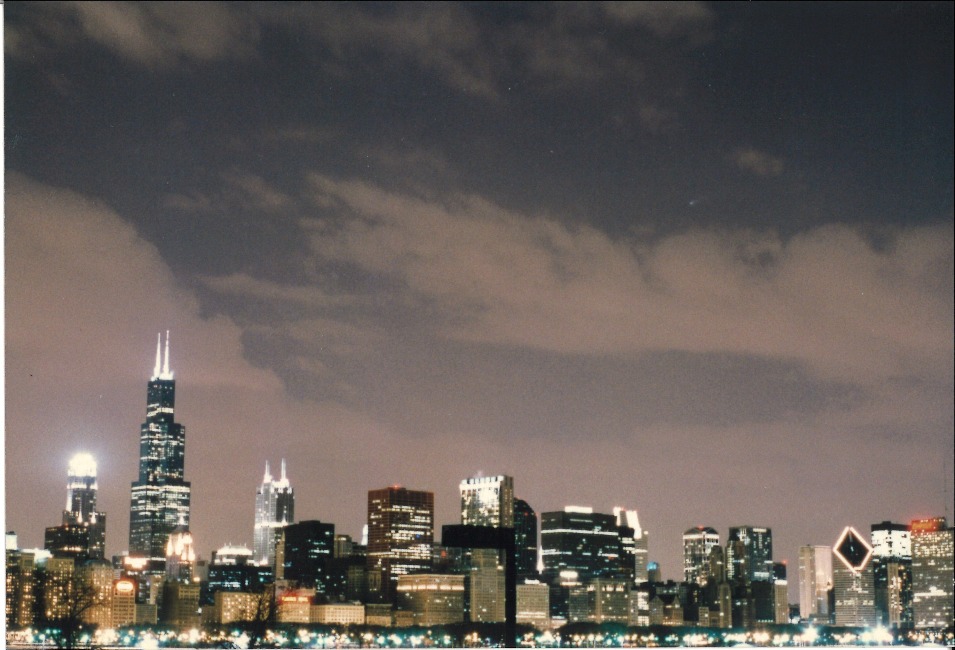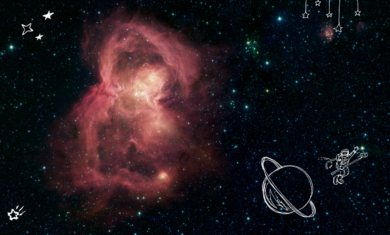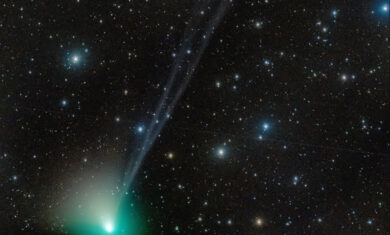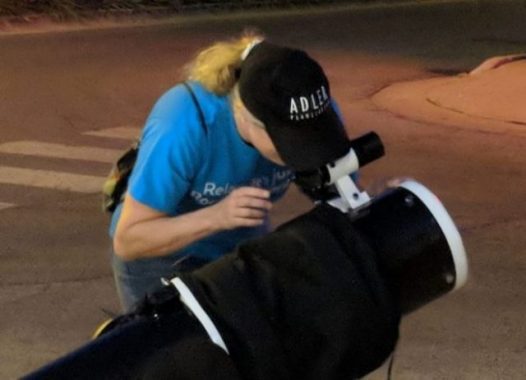Adler Skywatch: April 2019

Though Spring has begun in the Northern Hemisphere, some of the night sky’s brightest stars—usually associated with wintertime—can still be seen this month, April 2019
Look to the southwest during evening twilight, to see a rhombus-shaped pattern of bright stars—like a long, thin, horizontally-stretched-out square in the sky. The top point of the rhombus is the star Betelgeuse, and the bottom point is the star
During morning darkness this month, the planet Jupiter is low and bright in the southeast sky by about 2:00 am Central time. The morning of the 23rd it appears very close to a waning gibbous Moon. By about 3:30 am, the planet Saturn has cleared the southeastern horizon. The morning of the 25th, Saturn appears near the waning gibbous Moon.
Those who are sky-watching just before dawn should look for the brilliant planet Venus, rising in the east-southeast only about a half-hour before sunrise. The mornings of the 1st and the 2nd, it appears close to a waning crescent Moon. On clear mornings, Venus is truly bright and fairly easy to spot even as dawn starts to brighten the sky.
This month, if you have a clear view of the eastern horizon and your timing before sunrise is right, you might see the planet Mercury, appearing slightly below and to the left of Venus. Your best chance to spot Mercury is around mid-month when the planet is at its highest point above the horizon but before the rising Sun’s glare blocks the planet from view. As a reminder: NEVER look directly at the Sun, even if it’s just slightly above the horizon, or permanent eye damage could result.
The annual Lyrids meteor shower peaks this year the night of the 22nd and in the morning darkness of the 23rd. At its peak, the shower can generate 10 to 20 meteors per hour under moonless clear skies far from city lights. Unfortunately, this year the waning gibbous Moon will wash out many faint meteors. Your best chance to spot Lyrids is in a place far away from artificial lighting. If you are in a city or suburban location with a lot of light pollution, you may only see one or two Lyrid meteors per hour—or, possibly, none at all.
New Moon: April 5th
First Quarter Moon: April 12th
Full Moon: April 19th
Last Quarter Moon: April 26th
Please note: these descriptions are for the Chicago area, using Central time.







